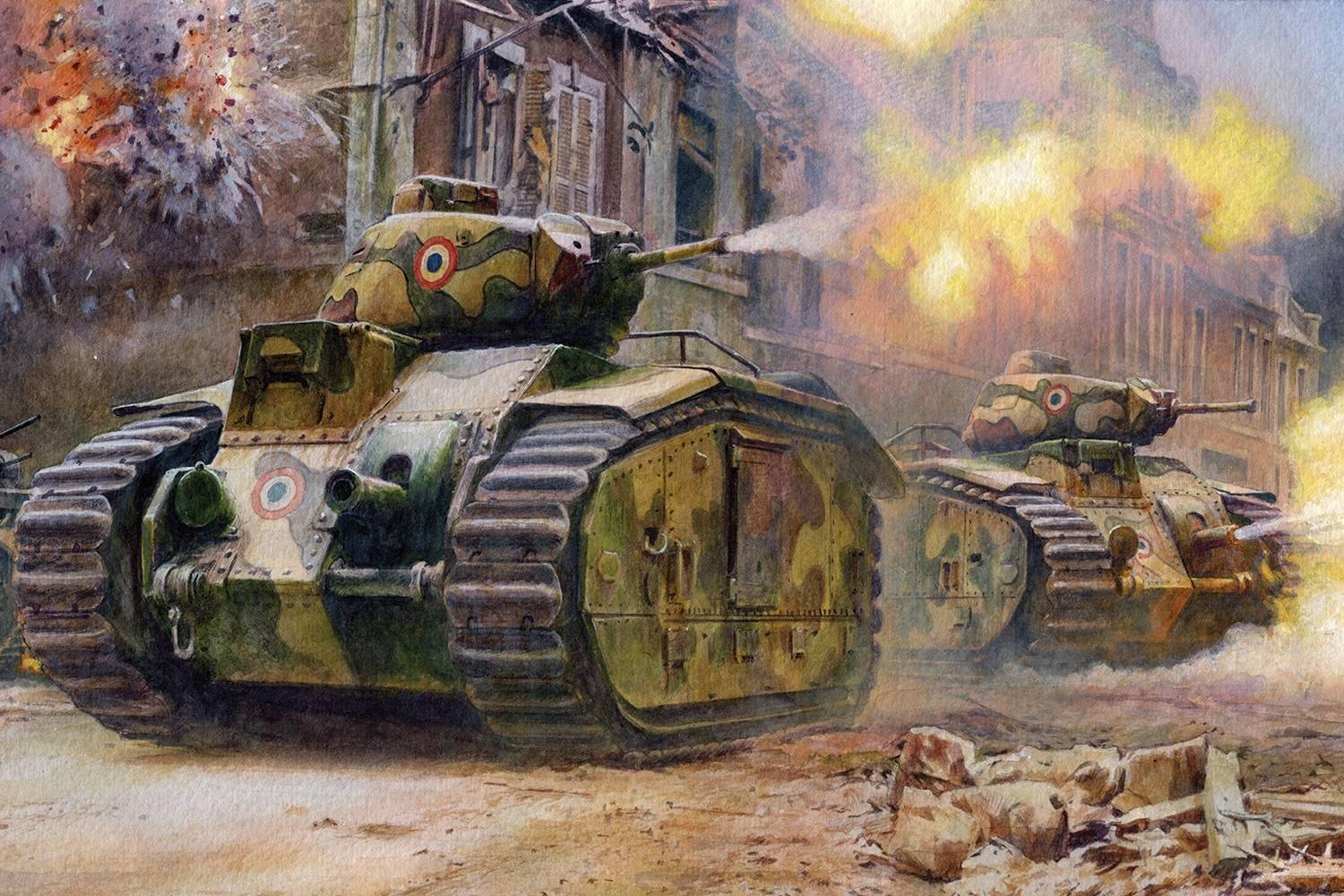
The Char B1 was a French heavy tank used during World War II. Known for its thick armor and powerful gun, it was a formidable opponent on the battlefield. But did you know it had a unique design that set it apart from other tanks of its time? With a 75mm howitzer in the hull and a 47mm gun in the turret, it could engage multiple targets simultaneously. Despite its strengths, the Char B1 had some drawbacks, like its slow speed and complex maintenance needs. Curious about more intriguing details? Here are 30 facts that will give you a deeper understanding of this iconic tank.
The Char B1: A French Heavy Tank
The Char B1 was a French heavy tank used during World War II. Known for its impressive armor and firepower, it played a significant role in the early stages of the war. Here are some fascinating facts about this iconic tank.
-
The Char B1 was initially designed in the 1920s but didn't enter production until the 1930s.
-
It was one of the heaviest tanks of its time, weighing around 32 tons.
-
The tank was equipped with a 75mm howitzer mounted in the hull and a 47mm gun in the turret.
-
Its armor was up to 60mm thick, providing substantial protection against enemy fire.
-
The Char B1 had a crew of four: a commander, driver, radio operator, and loader.
Design and Development
The Char B1's design and development process was lengthy and complex, reflecting the technological challenges of the era.
-
The tank's development began in 1921, but it took over a decade to finalize the design.
-
The initial prototype, known as the Char B, was completed in 1929.
-
The final version, the Char B1 bis, featured improved armor and a more powerful engine.
-
The tank's suspension system was advanced for its time, providing a smoother ride over rough terrain.
-
Despite its heavy weight, the Char B1 could reach speeds of up to 28 km/h (17 mph).
Combat Performance
The Char B1 saw action during the early stages of World War II, particularly during the Battle of France in 1940.
-
It was highly effective against German tanks, often outgunning and out-armoring them.
-
The Char B1's thick armor made it nearly impervious to most German anti-tank weapons of the time.
-
However, its slow speed and mechanical reliability issues limited its effectiveness in fast-moving battles.
-
The tank's complex design made it difficult to produce in large numbers, with only around 400 units built.
-
Despite these limitations, the Char B1 earned a reputation for its toughness and firepower.
Legacy and Influence
The Char B1 left a lasting legacy in tank design and military history, influencing future armored vehicle development.
-
The tank's combination of heavy armor and powerful armament set a standard for future heavy tanks.
-
Its design influenced the development of later French tanks, such as the ARL 44.
-
Some Char B1 tanks were captured by the Germans and used in their own forces under the designation Panzerkampfwagen B-2 740(f).
-
The Char B1's performance in battle highlighted the importance of mobility and mechanical reliability in tank design.
-
Today, several Char B1 tanks are preserved in museums, serving as a testament to their historical significance.
Technical Specifications
The Char B1's technical specifications reveal the advanced engineering that went into its design.
-
The tank was powered by a 6-cylinder, 307-horsepower engine.
-
It had a range of approximately 200 kilometers (124 miles) on roads.
-
The Char B1's main armament, the 75mm howitzer, had a limited traverse of only one degree to either side.
-
The 47mm turret gun had a higher rate of fire and was more effective against enemy armor.
-
The tank's radio equipment was state-of-the-art for its time, allowing for better communication on the battlefield.
Operational Challenges
Despite its strengths, the Char B1 faced several operational challenges that impacted its effectiveness.
-
The tank's complex transmission system required significant maintenance and was prone to breakdowns.
-
Its heavy weight made it difficult to transport and limited its strategic mobility.
-
The Char B1's fuel consumption was high, necessitating frequent refueling stops.
-
The tank's crew had to operate in cramped conditions, which could affect their performance during prolonged engagements.
-
Despite these challenges, the Char B1 remains an iconic symbol of French armored warfare during World War II.
Final Thoughts on the Char B1
The Char B1 stands out as a significant piece of military history. Its design, though initially flawed, showcased innovation and engineering prowess. Despite its shortcomings in speed and mechanical reliability, the Char B1's firepower and armor made it a formidable opponent on the battlefield. The tank's role during World War II highlights the importance of adaptation and technological advancement in warfare. Learning about the Char B1 offers a glimpse into the challenges and triumphs of early tank development. This tank, with its unique features and historical impact, remains a fascinating subject for history enthusiasts and military buffs alike. Understanding its story helps appreciate the evolution of armored vehicles and their role in shaping modern combat strategies.
Was this page helpful?
Our commitment to delivering trustworthy and engaging content is at the heart of what we do. Each fact on our site is contributed by real users like you, bringing a wealth of diverse insights and information. To ensure the highest standards of accuracy and reliability, our dedicated editors meticulously review each submission. This process guarantees that the facts we share are not only fascinating but also credible. Trust in our commitment to quality and authenticity as you explore and learn with us.
